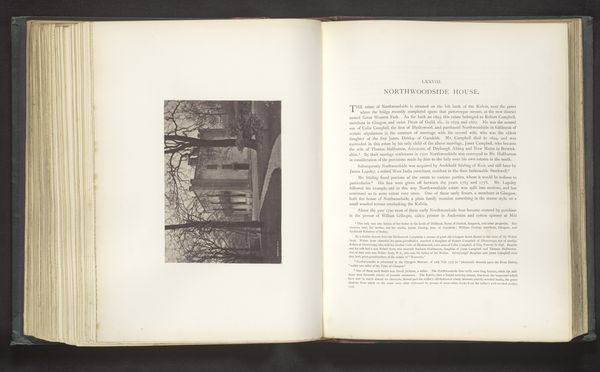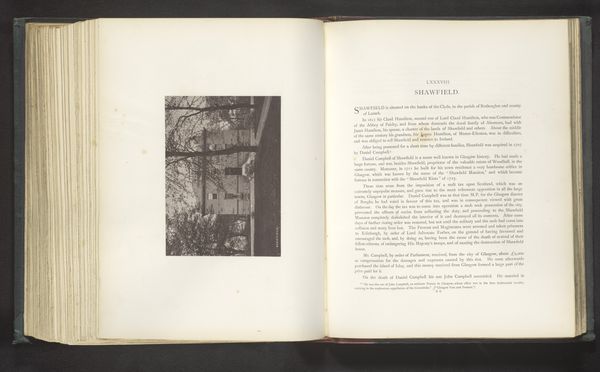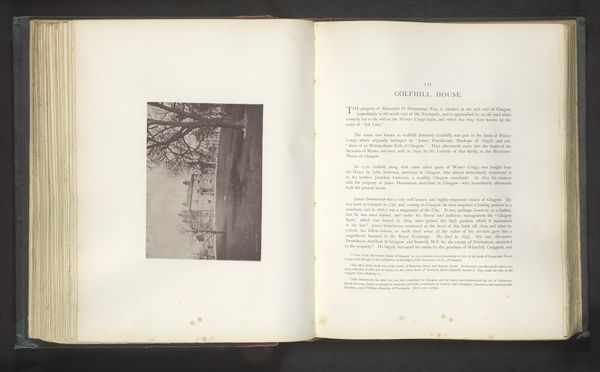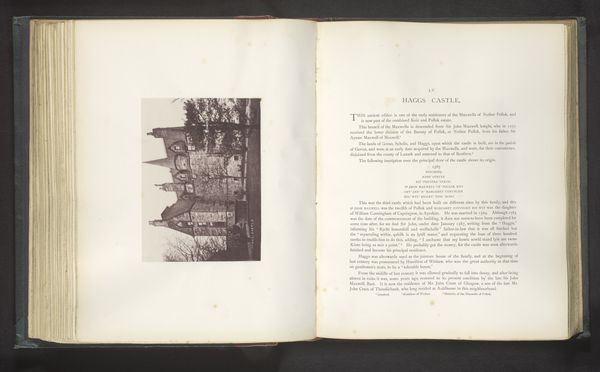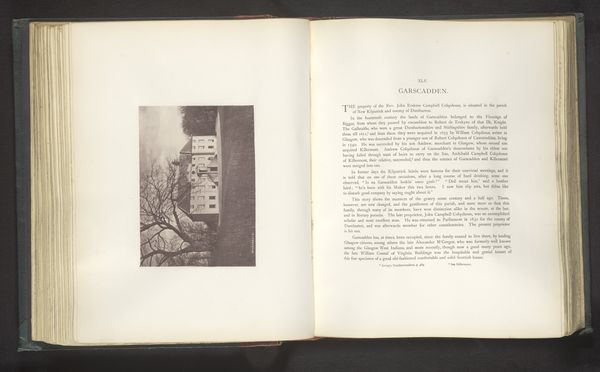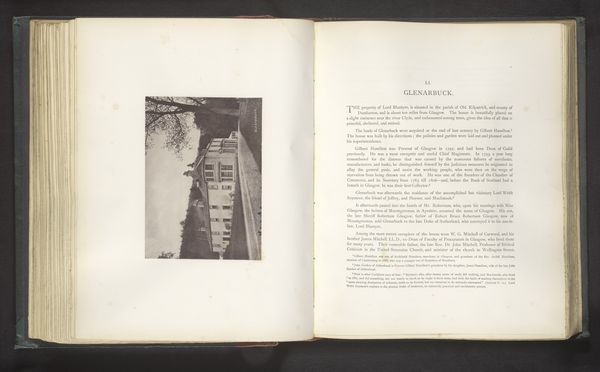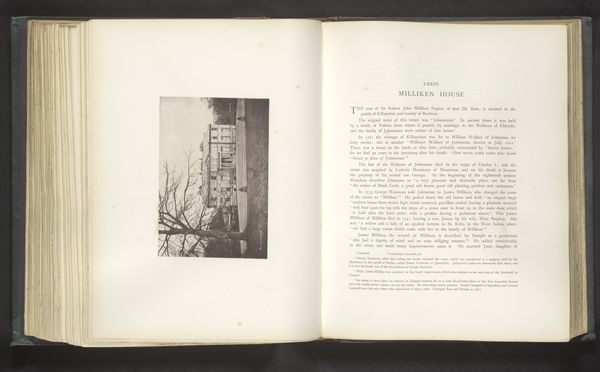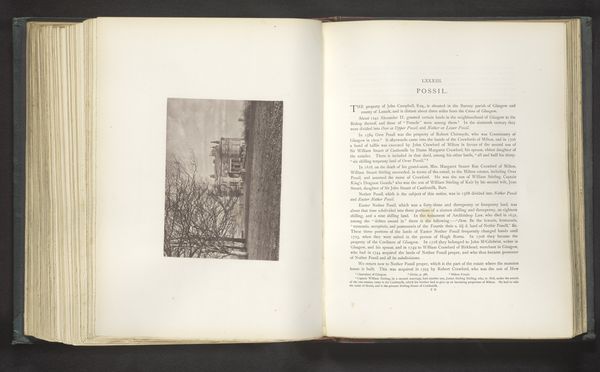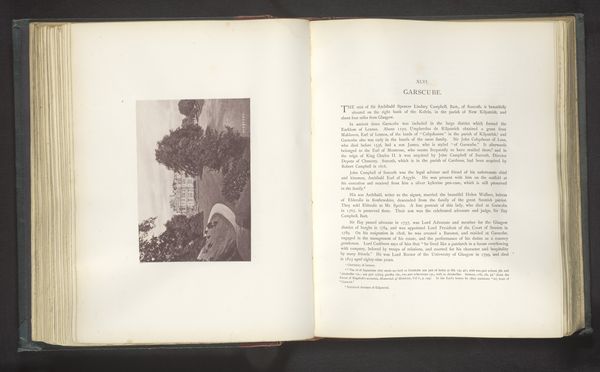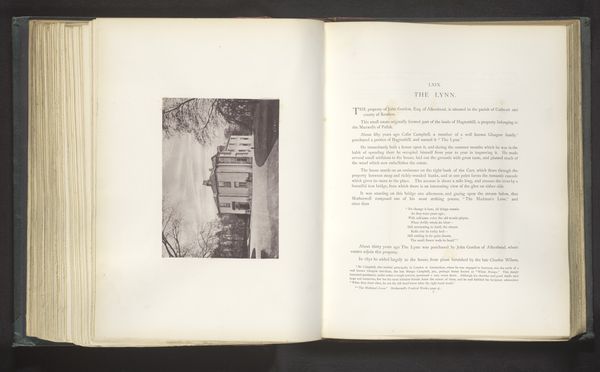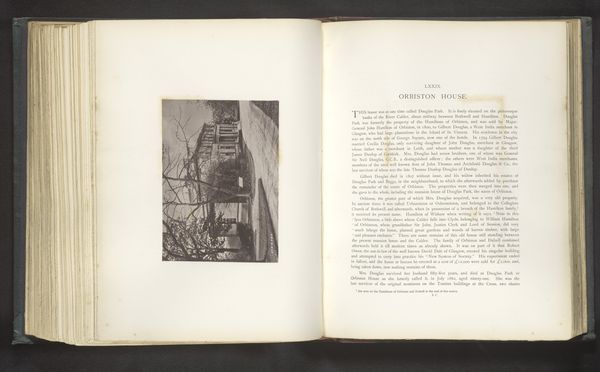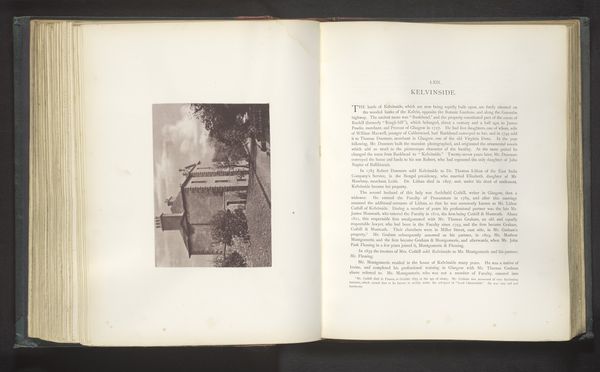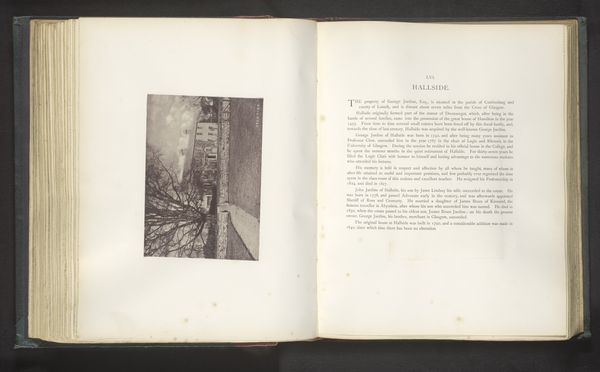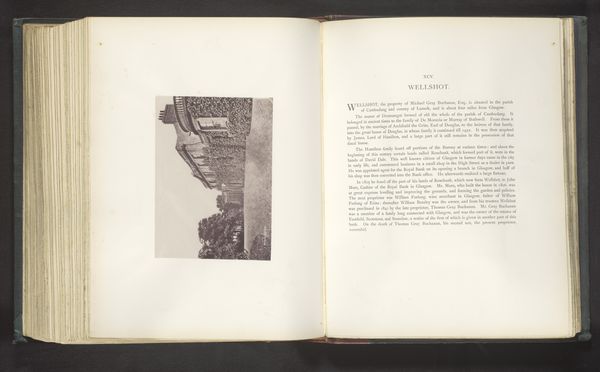
print, photography, albumen-print
# print
#
landscape
#
photography
#
albumen-print
#
building
Dimensions: height 115 mm, width 160 mm
Copyright: Rijks Museum: Open Domain
Editor: Here we have "Garnkirk," an albumen print dating to before 1878 by Thomas Annan. It seems to depict a grand building partially obscured by a large, bare tree, rendered in tones of gray. The photo is part of a larger bound volume, also on display. It has a melancholic feel for me. What catches your eye? Curator: I see an interesting contrast here, and one key to its interpretation lies in the production itself, an albumen print. Look closely. It’s an industrial process. The image, capturing the facade of a house, the domain of a certain level of comfort, becomes accessible to a wide public. What does the choice of this photographic printing process mean in terms of consumption and wider access to art? Editor: That's an interesting way of looking at it. The means of production democratizing art? So you are less focused on, say, the artistry of the photographer and more on the material accessibility of the image? Curator: Precisely. And more than just accessibility, but the commodification of imagery and landscape, specifically. Think of the social context: photography enabled widespread documentation, and dissemination. By examining these prints, we gain access to ideas about class and industrialization. Do you see how this contrasts with traditional art, like painting or sculpture, typically accessible to a different kind of buyer? Editor: Yes, it sheds a different light on what's considered 'high art.' Curator: Exactly! The tension is between the material and the pictorial and that reflects deeper shifts within art as commerce. Ultimately, this pushes the viewer to think about not just what the image *is*, but *how* it became *available* to us. Editor: I never would have considered that on my own. I'll certainly keep that in mind next time I am looking at photographs from this era.
Comments
No comments
Be the first to comment and join the conversation on the ultimate creative platform.
